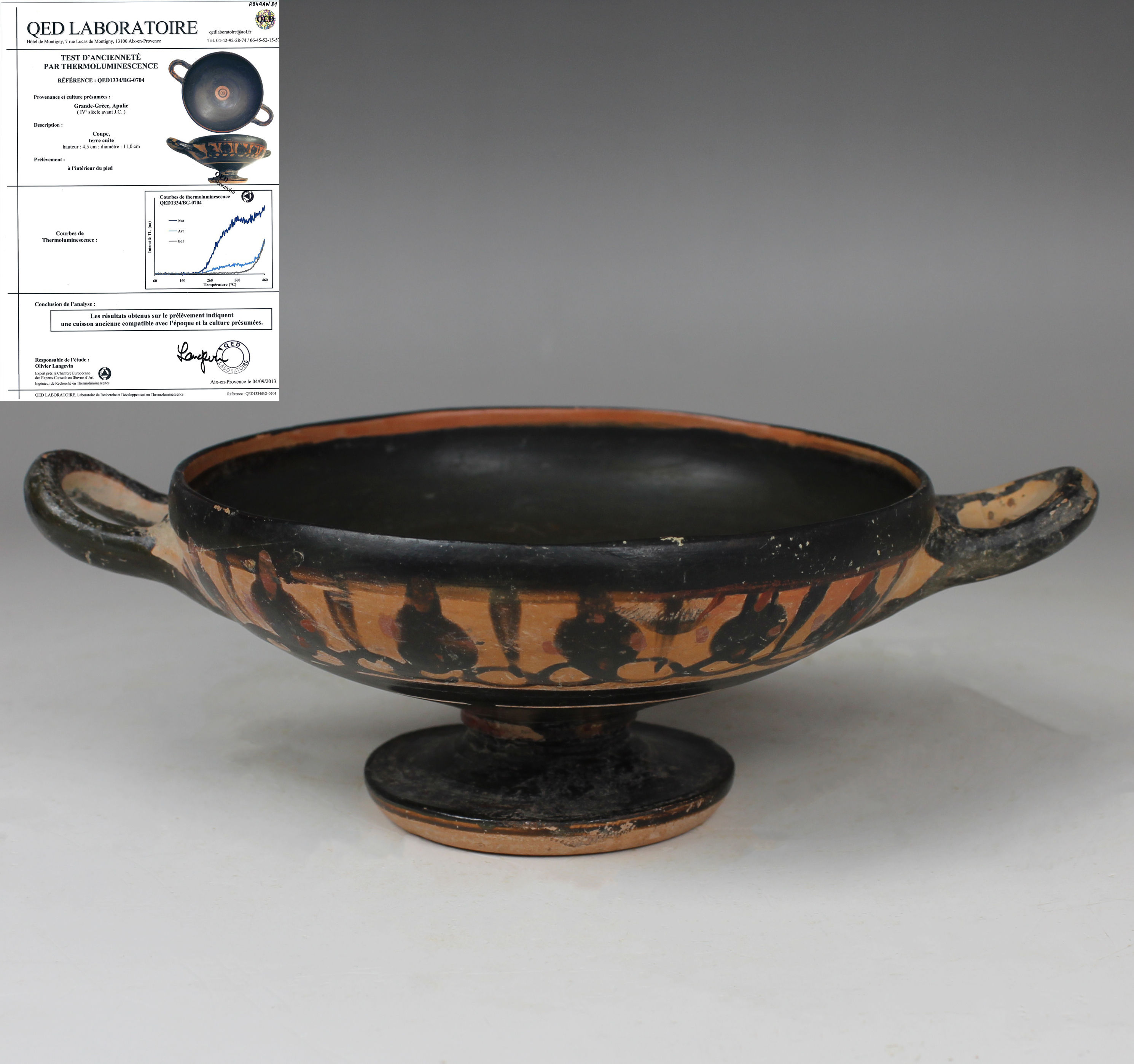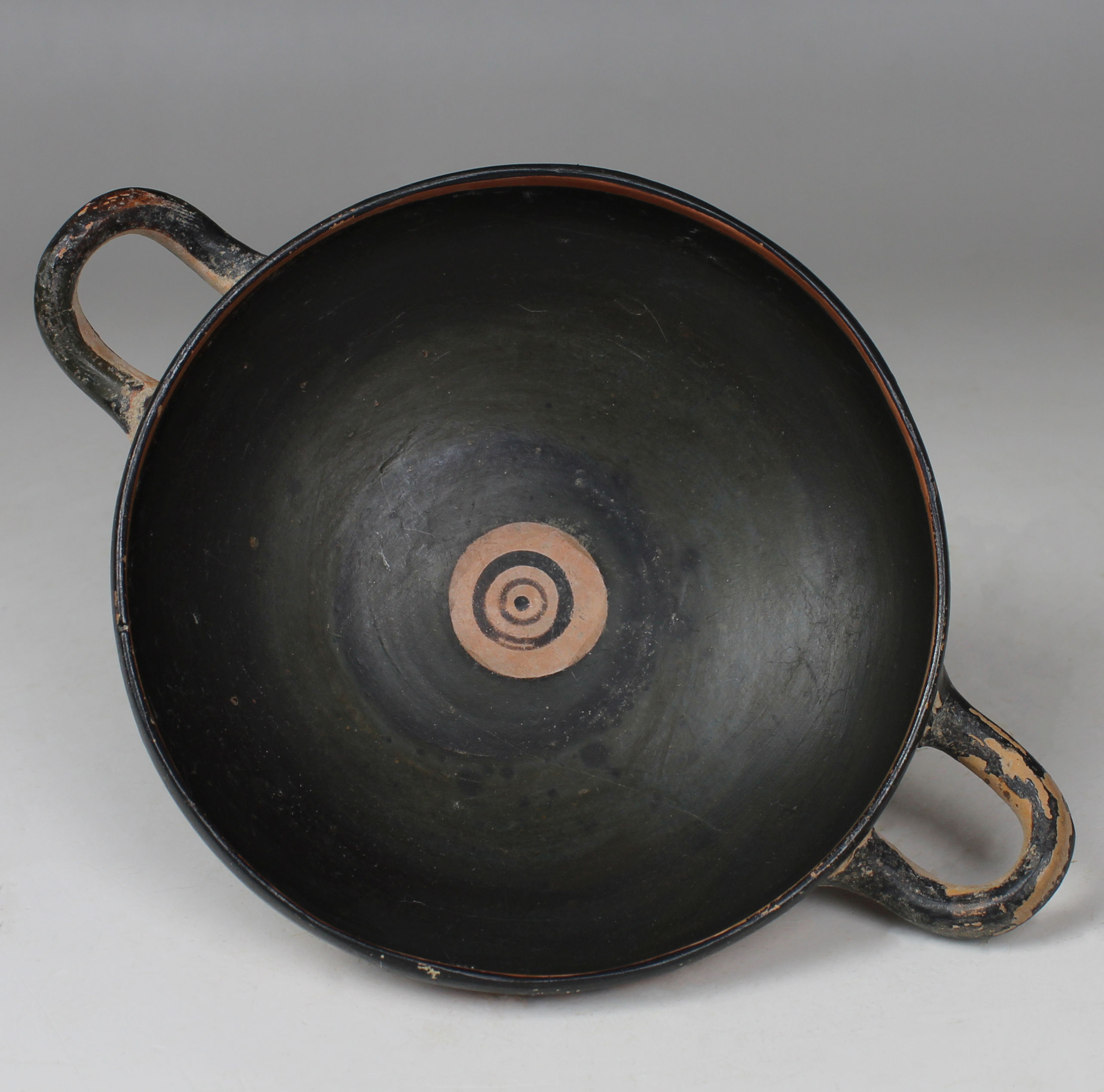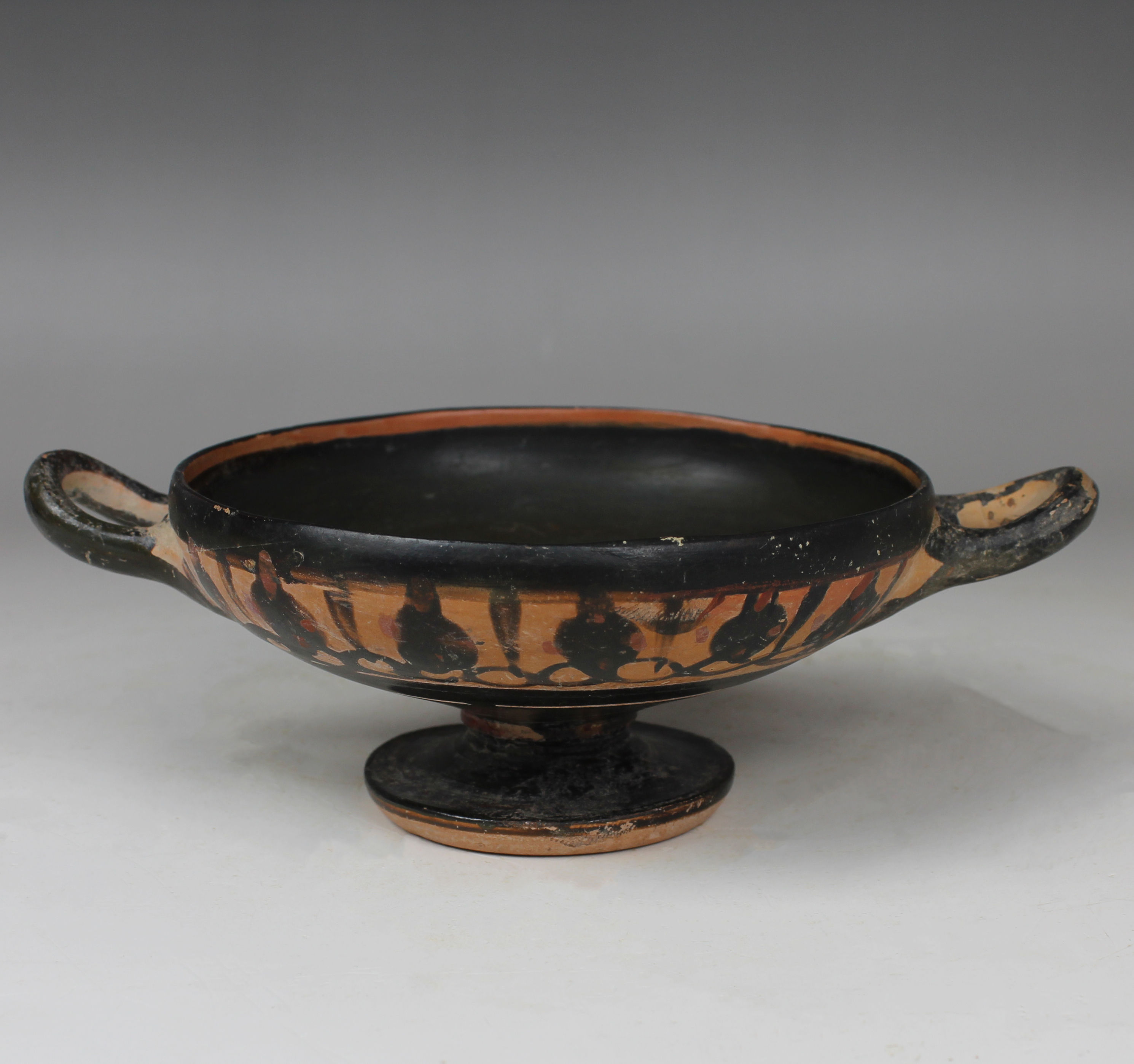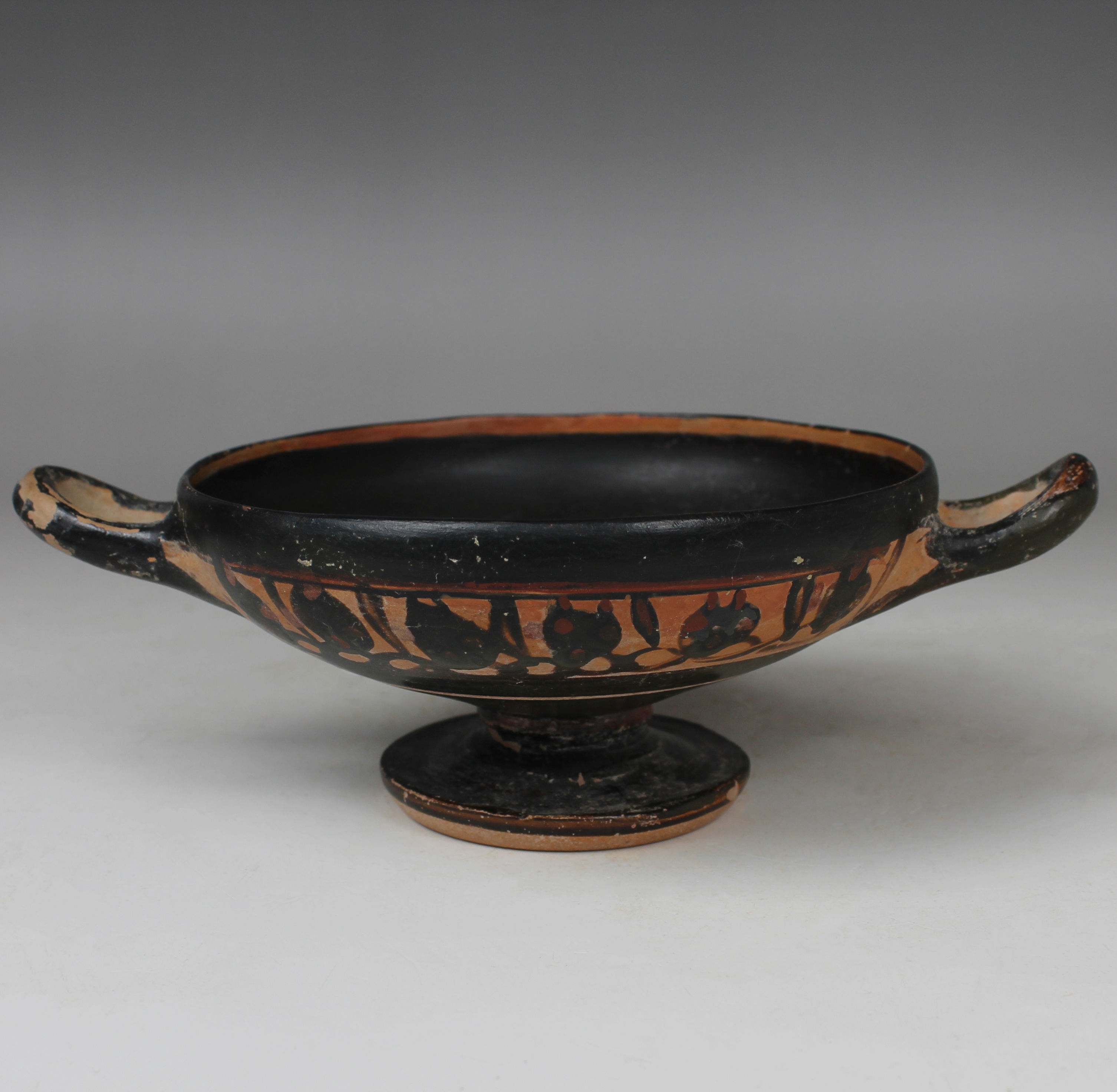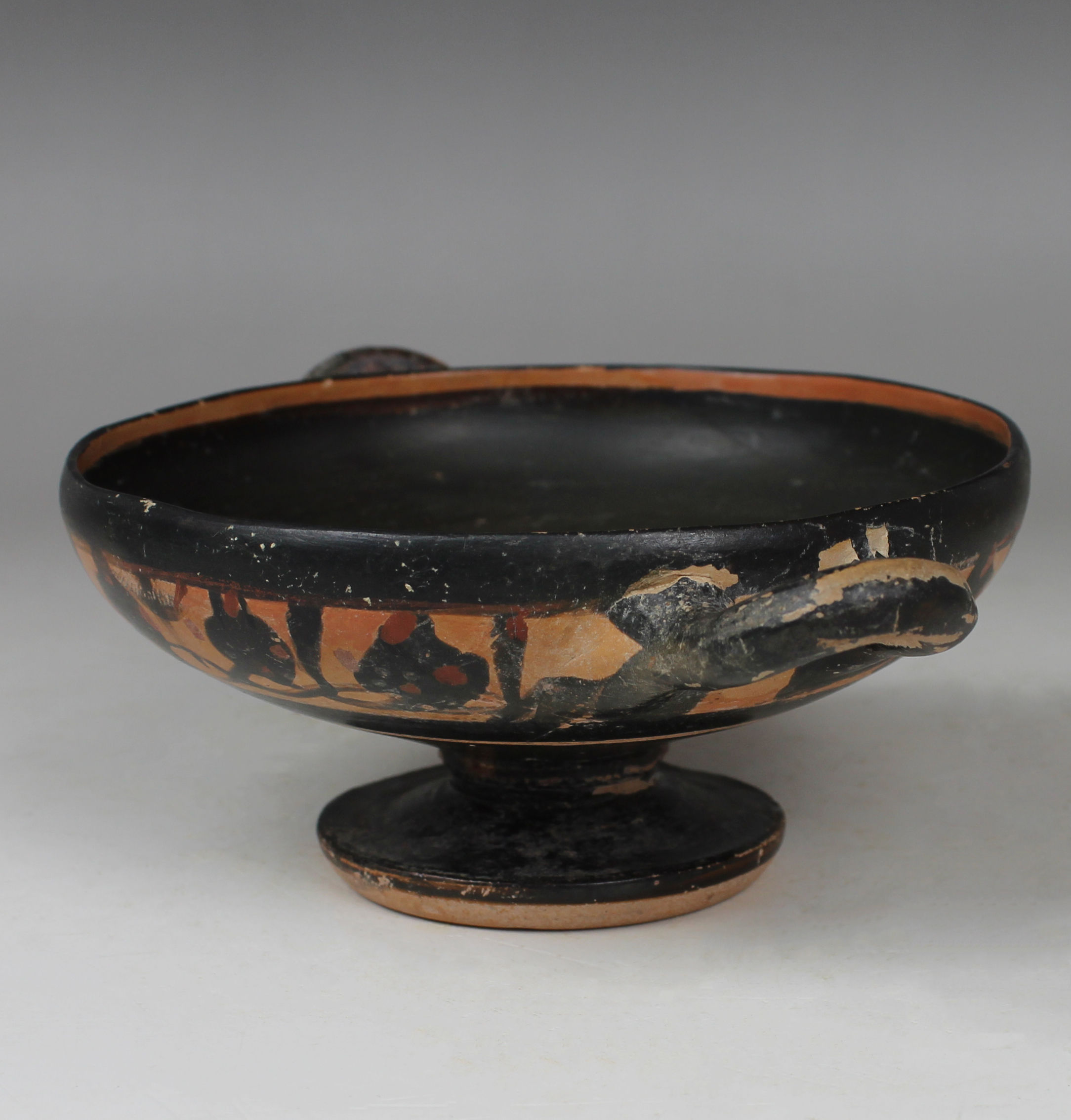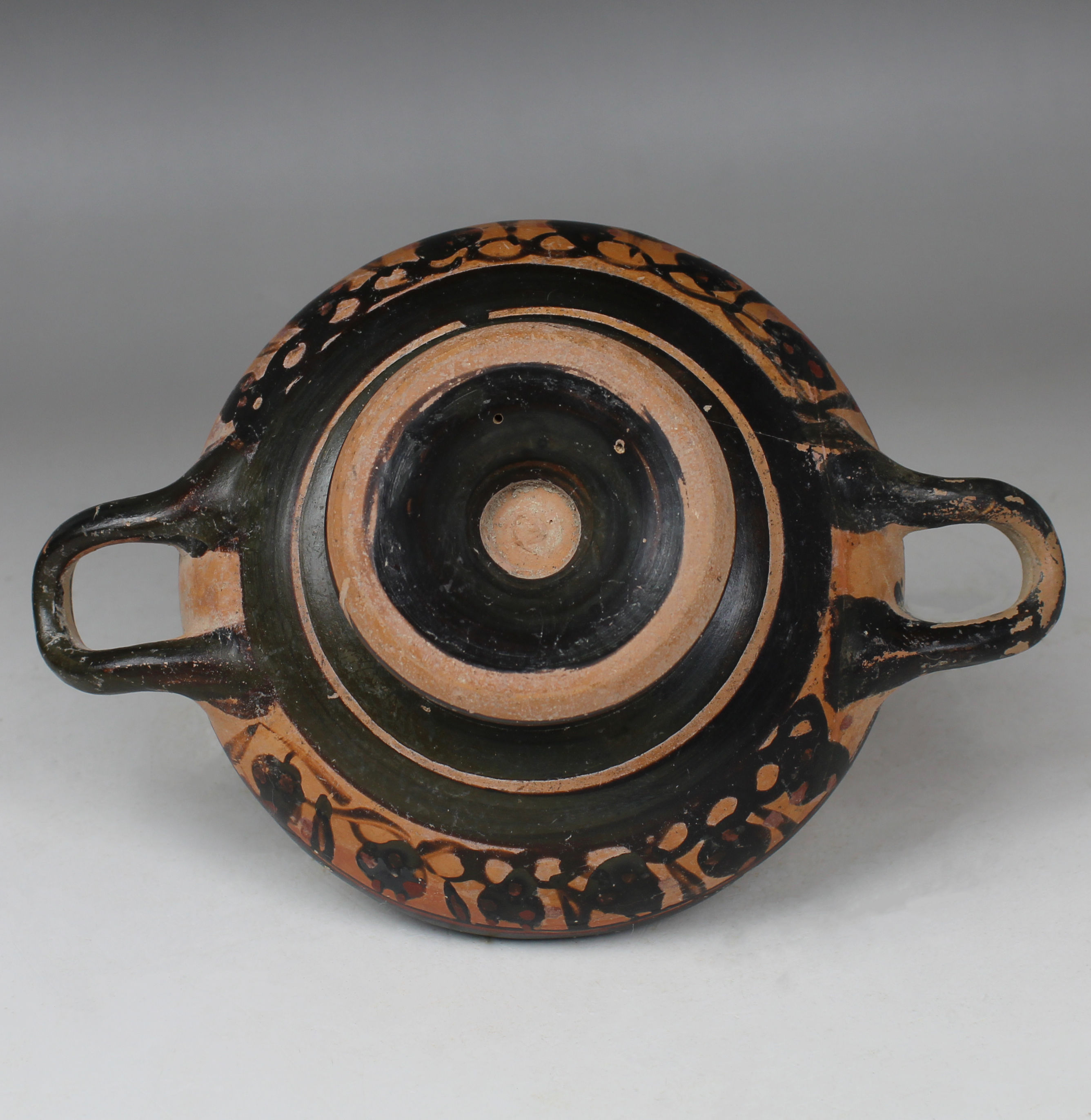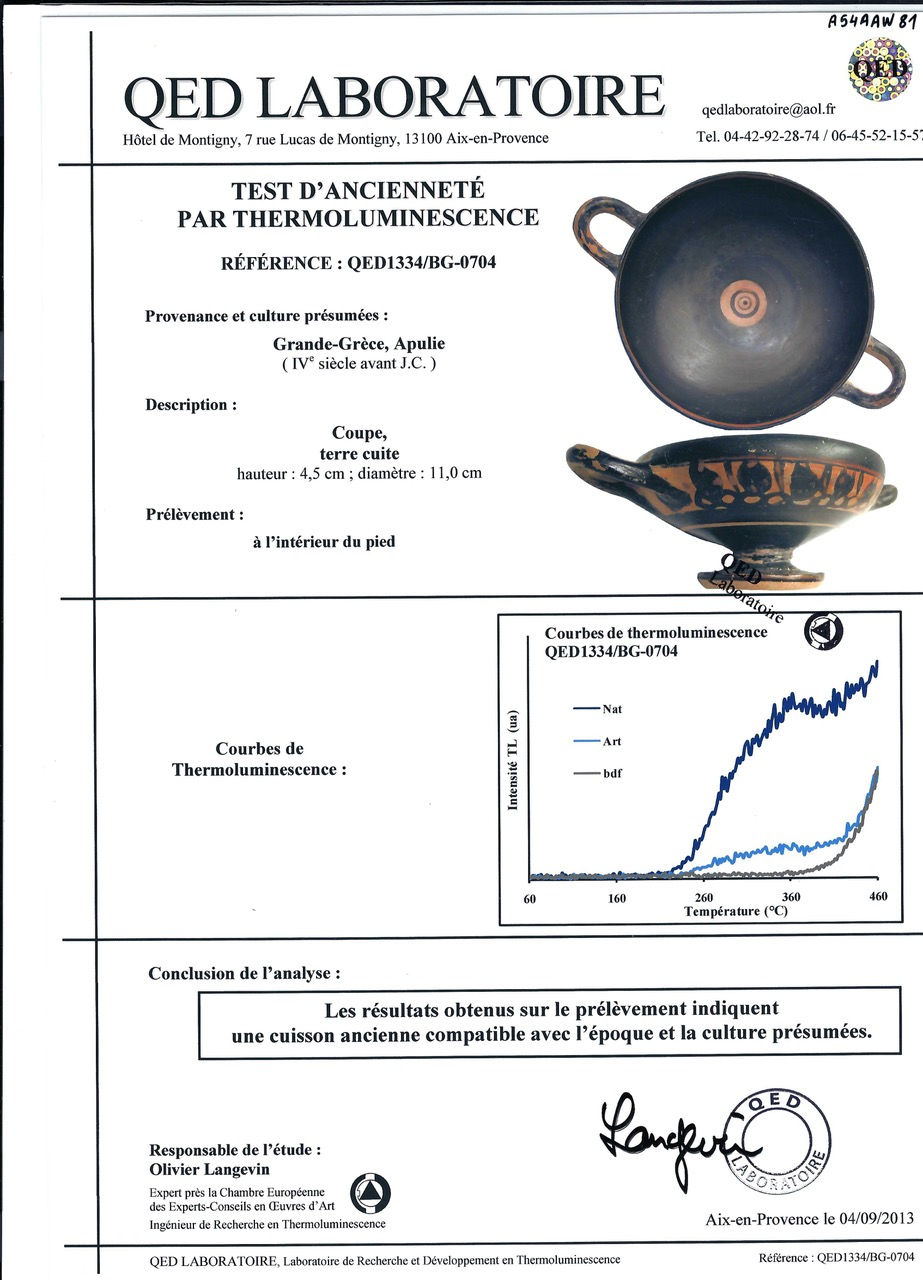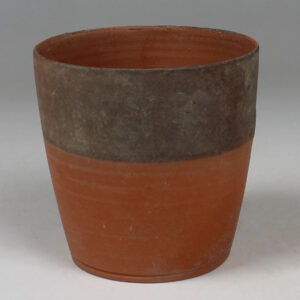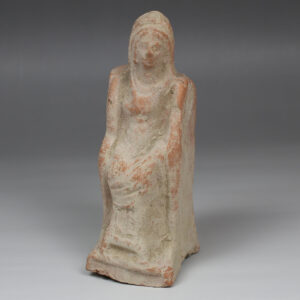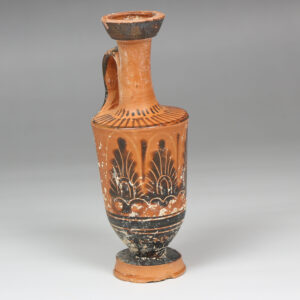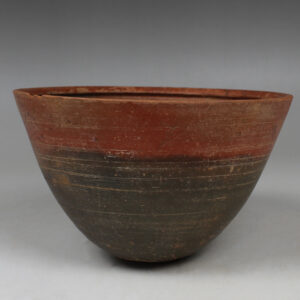Description
| ITEM | Kylix |
| MATERIAL | Pottery |
| CULTURE | Greek, Apulian |
| PERIOD | 4th Century B.C |
| DIMENSIONS | 55 mm x 162 mm x 112 mm |
| CONDITION | Good condition. Includes Thermoluminescence test by QED Laboratoire (Reference QED1334/BG-0704) |
| PROVENANCE | Ex Belgian private collection, acquired from Christophe Varosi Gallery, Brussels in 2001 |
The Greek kylix is a type of shallow drinking cup that was popular during the Archaic and Classical periods of ancient Greece, from the 6th to the 4th centuries BCE. Kylikes were typically made from clay and featured a wide, shallow bowl with two horizontal handles known as “”ear”” handles. These handles allowed the cup to be easily lifted and shared among drinkers during symposia, social gatherings where men would drink wine, converse, and engage in intellectual and recreational activities.
One of the distinctive features of the kylix is its artistic decoration, often found on the interior surface of the bowl. Red-figure and black-figure painting techniques were commonly used to adorn kylikes with scenes from mythology, daily life, athletics, or symposium scenes. These intricate designs not only served an aesthetic purpose but also provided a focal point for conversation and entertainment during the symposium. The exterior of the kylix was usually left plain or decorated with simple geometric patterns.
The shape and function of the kylix were closely tied to the culture of ancient Greece, particularly its emphasis on communal drinking and social interaction. The shallow bowl allowed for easy access to the wine, while the handles facilitated sharing among participants. The symposium, where kylikes were prominently featured, played a significant role in Greek social life, serving as a space for intellectual exchange, philosophical discourse, and the forging of social bonds.”


